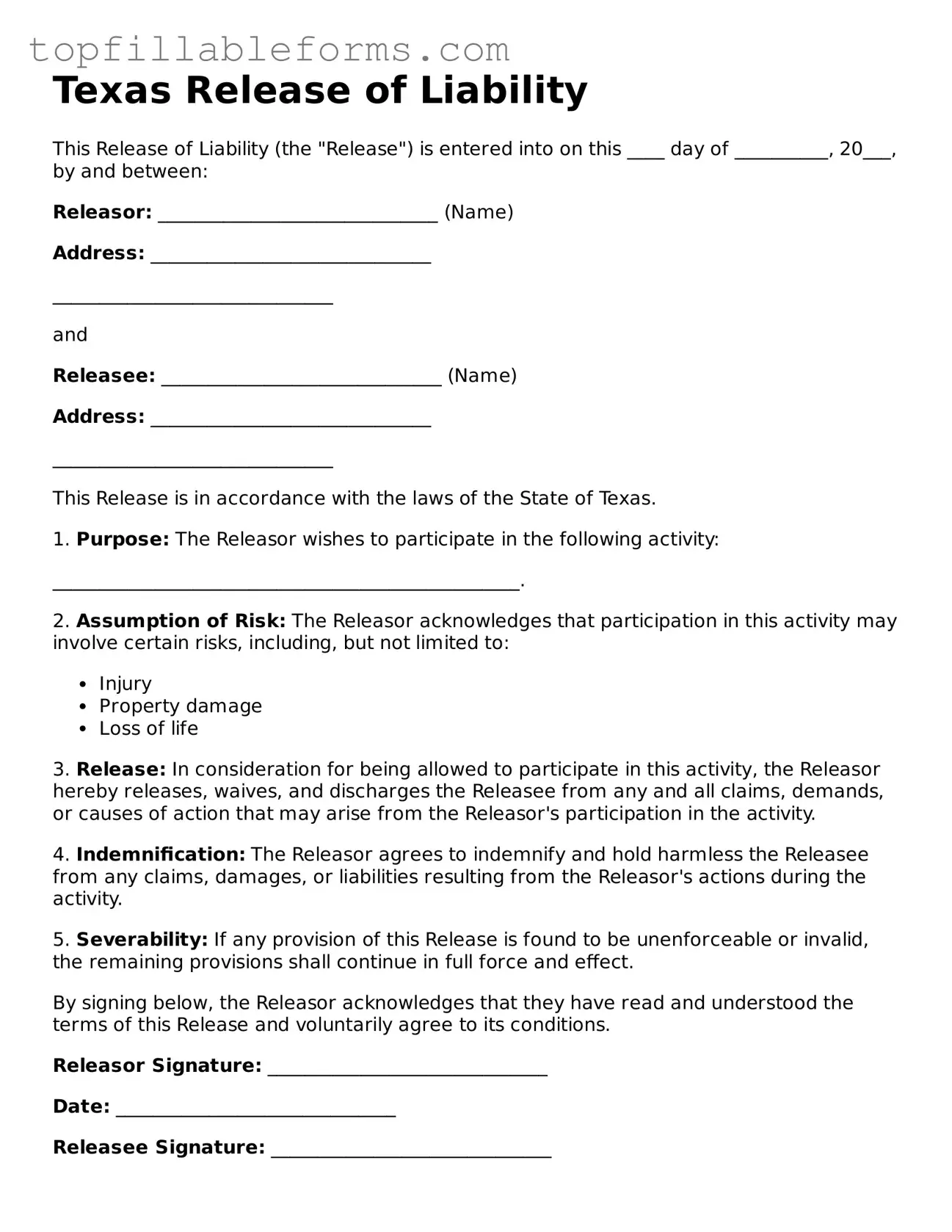Texas Release of Liability
This Release of Liability (the "Release") is entered into on this ____ day of __________, 20___, by and between:
Releasor: ______________________________ (Name)
Address: ______________________________
______________________________
and
Releasee: ______________________________ (Name)
Address: ______________________________
______________________________
This Release is in accordance with the laws of the State of Texas.
1. Purpose: The Releasor wishes to participate in the following activity:
__________________________________________________.
2. Assumption of Risk: The Releasor acknowledges that participation in this activity may involve certain risks, including, but not limited to:
- Injury
- Property damage
- Loss of life
3. Release: In consideration for being allowed to participate in this activity, the Releasor hereby releases, waives, and discharges the Releasee from any and all claims, demands, or causes of action that may arise from the Releasor's participation in the activity.
4. Indemnification: The Releasor agrees to indemnify and hold harmless the Releasee from any claims, damages, or liabilities resulting from the Releasor's actions during the activity.
5. Severability: If any provision of this Release is found to be unenforceable or invalid, the remaining provisions shall continue in full force and effect.
By signing below, the Releasor acknowledges that they have read and understood the terms of this Release and voluntarily agree to its conditions.
Releasor Signature: ______________________________
Date: ______________________________
Releasee Signature: ______________________________
Date: ______________________________
